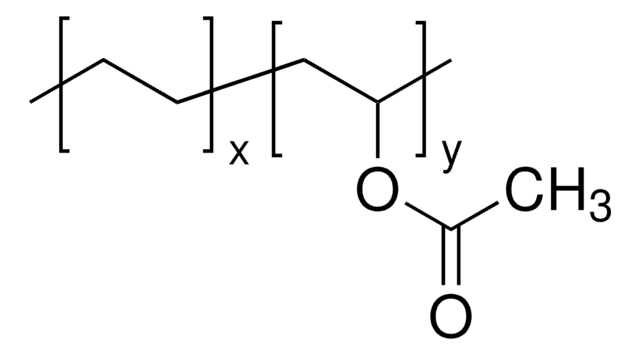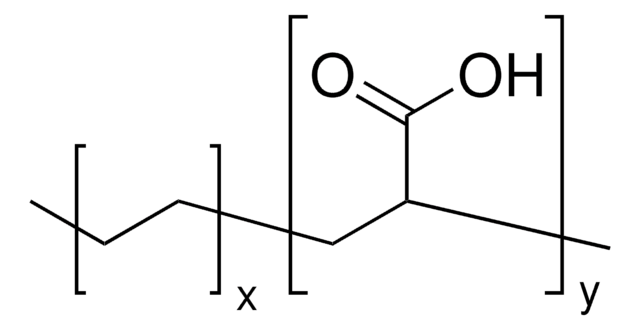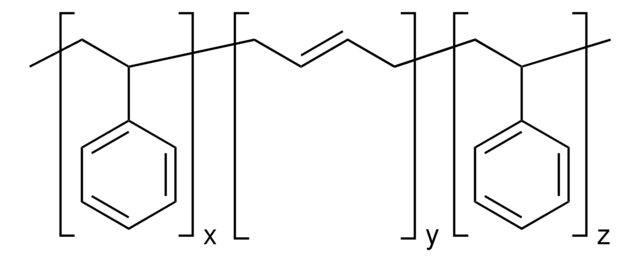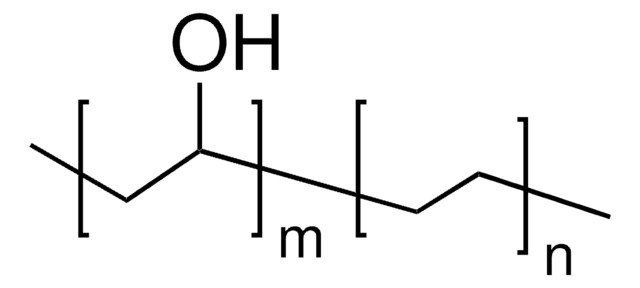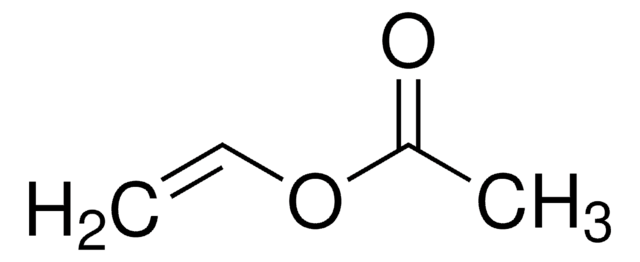Wichtige Dokumente
437239
Poly(ethylen-co-vinylacetat)
vinyl acetate 18 wt. %, melt index 8 g/10 min (190°C/2.16kg), contains 200-900 ppm BHT as inhibitor
About This Item
Empfohlene Produkte
Form
beads
Qualitätsniveau
Selbstzündungstemp.
500 °F
Schmelzindex
8 g/10 min (190°C/2.16kg)
Enthält
200-900 ppm BHT as inhibitor
Zusammensetzung
vinyl acetate, 18 wt. %
Härte
38 (Shore D, ASTM D 2240)
mp (Schmelzpunkt)
87 °C
Übergangstemp.
softening point 61 °C (Vicat, ASTM D 1525)
Dichte
0.94 g/mL at 25 °C
SMILES String
C=C.CC(=O)OC=C
InChI
1S/C4H6O2.C2H4/c1-2-3-4(5)6;1-2/h2H,1,3H2,(H,5,6);1-2H2
InChIKey
DQXBYHZEEUGOBF-UHFFFAOYSA-N
Suchen Sie nach ähnlichen Produkten? Aufrufen Leitfaden zum Produktvergleich
Verwandte Kategorien
Anwendung
Leistungsmerkmale und Vorteile
Signalwort
Warning
H-Sätze
Gefahreneinstufungen
Carc. 2
Lagerklassenschlüssel
11 - Combustible Solids
WGK
WGK 2
Flammpunkt (°F)
Not applicable
Flammpunkt (°C)
Not applicable
Hier finden Sie alle aktuellen Versionen:
Besitzen Sie dieses Produkt bereits?
In der Dokumentenbibliothek finden Sie die Dokumentation zu den Produkten, die Sie kürzlich erworben haben.
Kunden haben sich ebenfalls angesehen
Global Trade Item Number
| SKU | GTIN |
|---|---|
| 437239-250G | 4061832118222 |
| 437239-500G |
Unser Team von Wissenschaftlern verfügt über Erfahrung in allen Forschungsbereichen einschließlich Life Science, Materialwissenschaften, chemischer Synthese, Chromatographie, Analytik und vielen mehr..
Setzen Sie sich mit dem technischen Dienst in Verbindung.